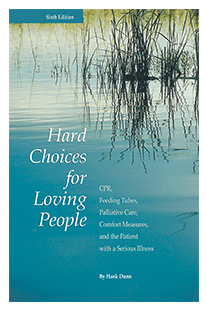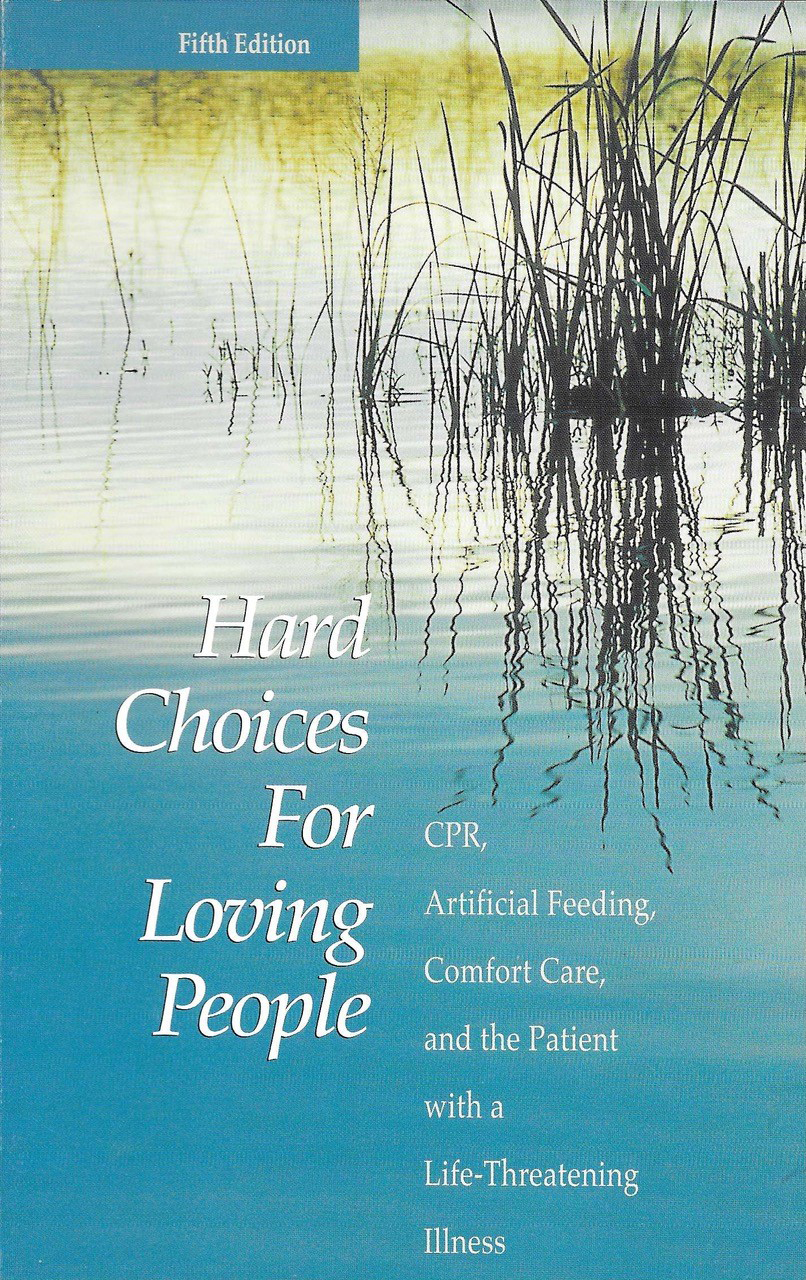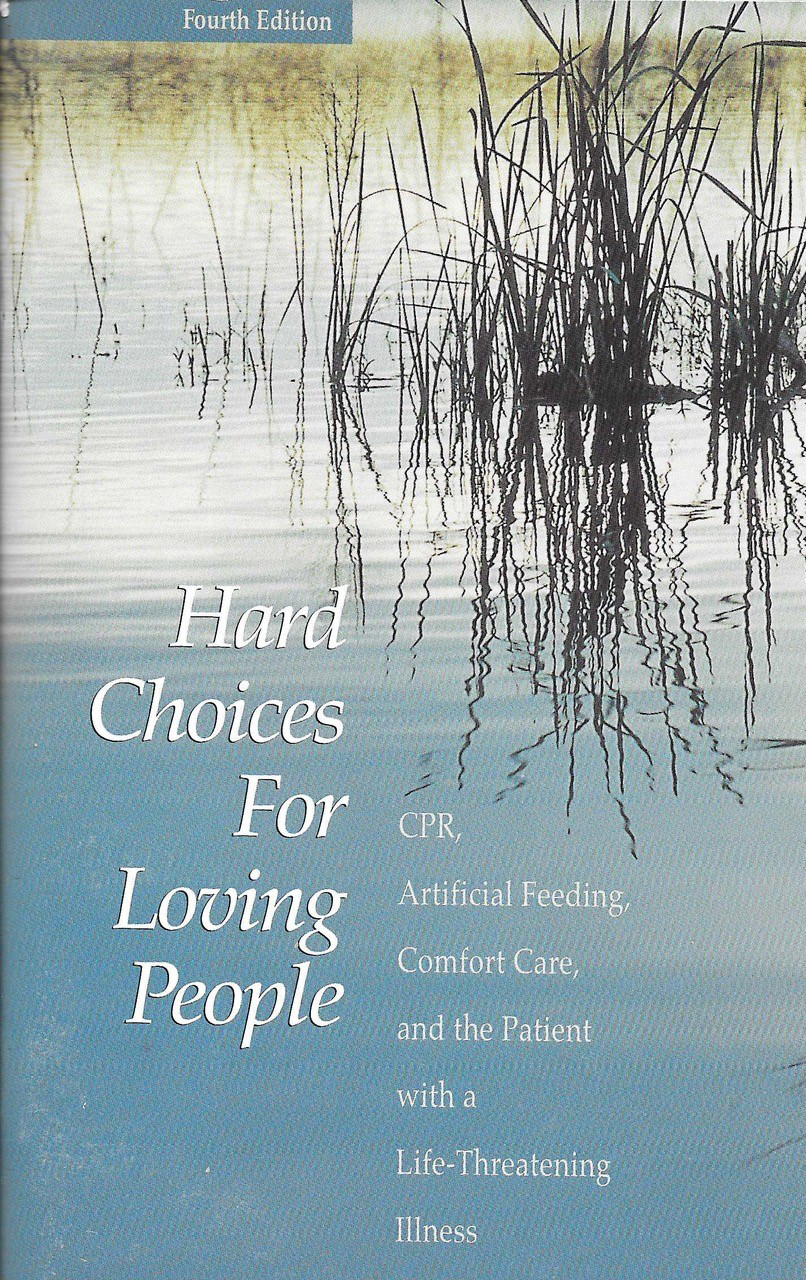This is the seventh and last post in a series of articles about the writing and distribution of Hard Choices for Loving People.

Article featuring the 1st edition and its subtitle, “CPR, Artificial Feeding Tubes, and The Nursing Home Resident”
What is in a name? …or title? …or subtitle?
Over 30 years, Hard Choices for Loving People has been the title of the book. But the subtitle has morphed, most notably in the audience to whom the book is addressed. It began with “the nursing home resident,” then changed to “the elderly patient.” Next was “the patient with a terminal illness,” then, “the patient with a life-threatening illness,” and finally “the patient with a serious illness.”
I wanted to welcome as many people as possible into reading my book. My constant worry was that I would turn people off or scare them away or that they would think “this book is not for me.” When I had “terminal illness” in the subtitle, readers might resist facing this fact until a few days, or even hours, before death. They need to read the book long before that time. So I replaced “terminal” with “life-threatening.”
I have now settled on “serious illness” for several reasons. First, it is the language you find in medical journals. Second, there is a standard definition for what a serious illness is; essentially, an illness with a high probability that it will end in death and which causes burdens on the patient and their caregivers. Third, people know if they have a hard time getting out of a chair or are in constant pain something is “serious.”
I didn’t want to scare people off
Where did the book title come from? To tell the truth, I can’t remember exactly how I came up with the name Hard Choices for Loving People. As I said, I did not want to scare people off, so I avoided words like “preparing for death,” or “let go.” If people are struggling with accepting a terminal diagnosis, they certainly did not want to read a book to help prepare them for death.
The double entendre was intentional. These were hard choices as people are figuring out the loving thing to do. AND loving people have to make these hard choices.
I’ll close this series of articles with an excerpt from the book where I address these choices, or, rather, a single choice:
“The truth is that we will die whether we give up, let go, or let be. We are making a choice about the nature of our dying or the dying of one we love. We can choose to die in trust and grace or in fear and struggle.
“Perhaps I titled my book improperly. We are not faced with many hard choices. We are faced with one hard choice: Can we let go and live life out of grace or must we hold on out of fear? Can we just let things be? That is really what we are talking about. To withhold or withdraw artificial and mechanical devices is just returning the patient to a natural state. We are accepting what is. We have come to accept that the patient is dying and we will just let be.” (Hard Choices for Loving People, p. 73)



 Hard Choices for Loving People came into its own during the Fourth Edition, between 2001 and 2009. We passed one million books sold in 2002 and two million in 2007. At one point, we were shipping over 4,000 books a week. In 2009, a Taiwanese publisher requested permission to translate the text into Chinese, even delaying publishing until the Fifth Edition was ready. Later, in 2013, a publisher in Tokyo requested permission for the Japanese translation.
Hard Choices for Loving People came into its own during the Fourth Edition, between 2001 and 2009. We passed one million books sold in 2002 and two million in 2007. At one point, we were shipping over 4,000 books a week. In 2009, a Taiwanese publisher requested permission to translate the text into Chinese, even delaying publishing until the Fifth Edition was ready. Later, in 2013, a publisher in Tokyo requested permission for the Japanese translation.


